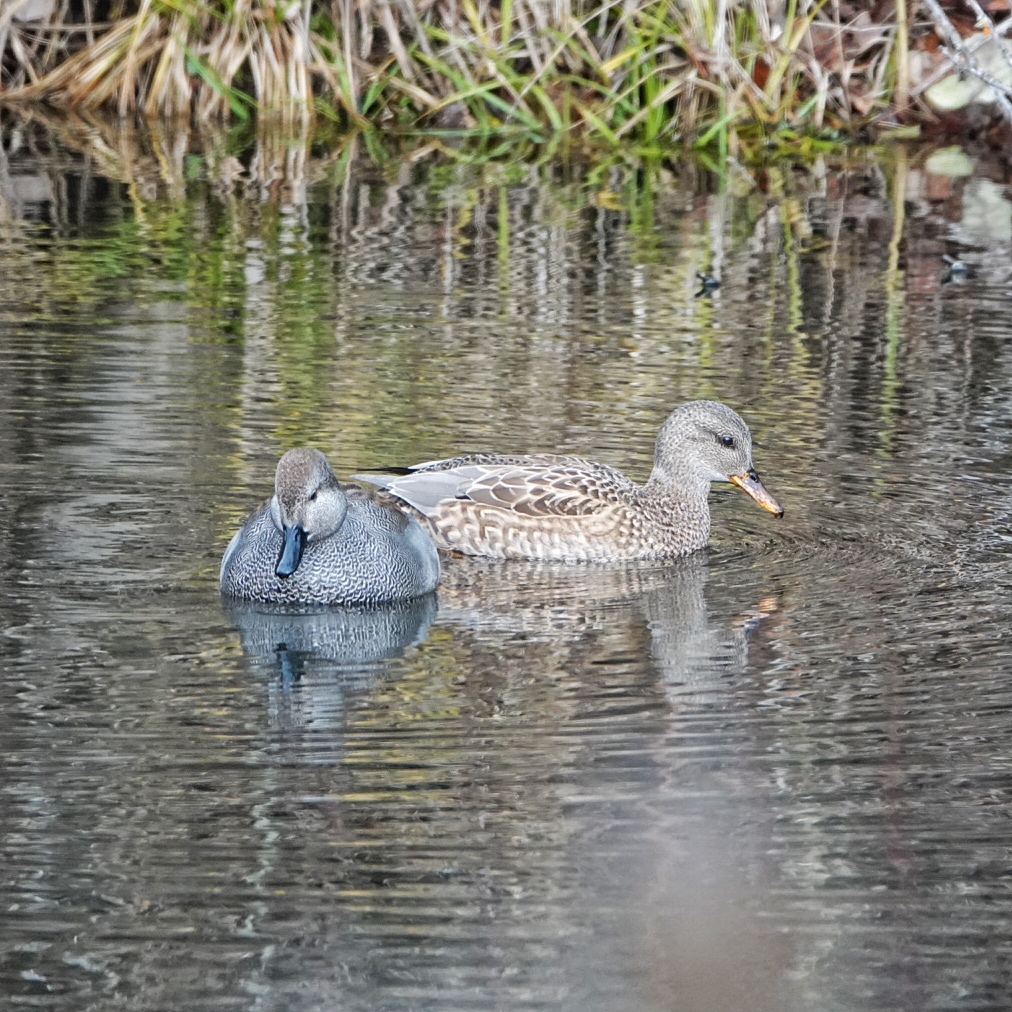
I am very fond of Gadwalls for a variety of reasons, not the least of which is their ease of identification. Most male ducks are not difficult to identify if seen clearly, and male Gadwalls are no exception, because that combination of grey body and black rump is quite distinctive. What endeared them to me as a novice birder was that Gadwalls pair up early in migration, and you seldom see a female without there being a nearby male to corroborate the identification. And even when they are not side by side one can often see the all white wing patch (speculum) that distinguishes female Gadwalls from hens of several other cryptically colored species.
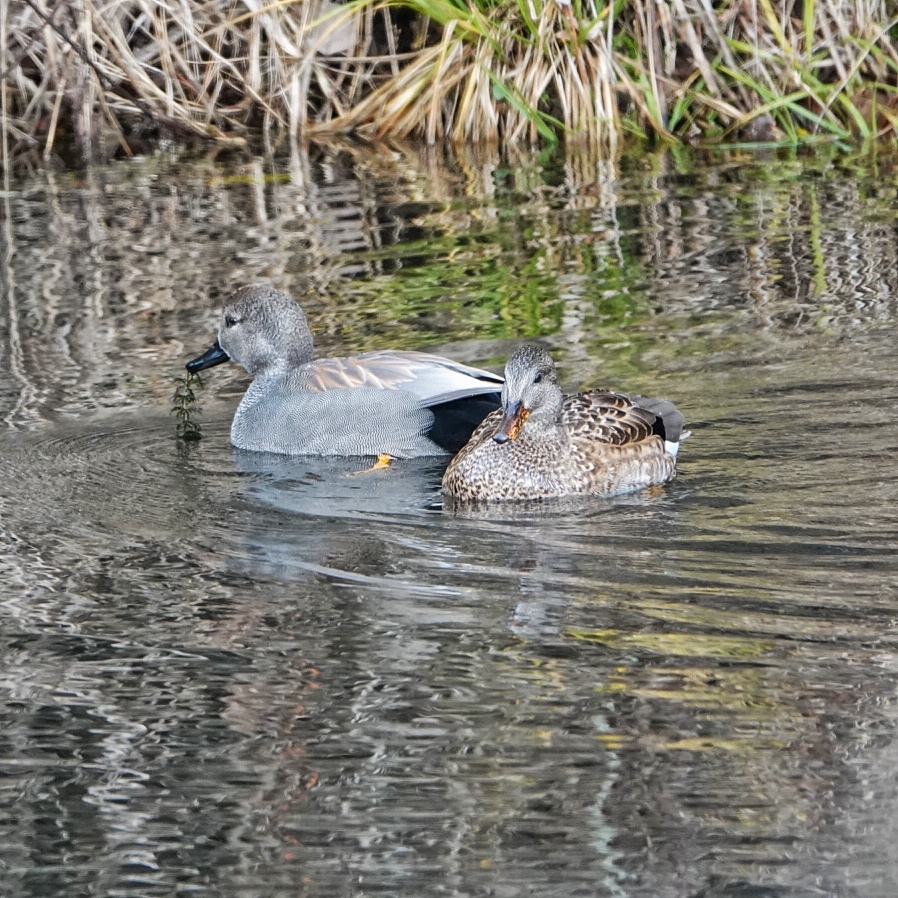
Another reason to appreciate Gadwalls is that while the male may seem rather drab (or have an elegant simplicity, as I like to think of it) at a distance, with decent optics he is seen to be beautifully patterned with various barring and vermiculations, and subtle changes in shading, which nicely contrasts with the black bill and rump. And yet, distinctive as that seems in open water, it becomes very good camouflage in vegetation, where the bill and rump appear to be shadows, the breast barring seems to be ripples in the water, and the rest blends nicely with the bankside plants and woody debris.
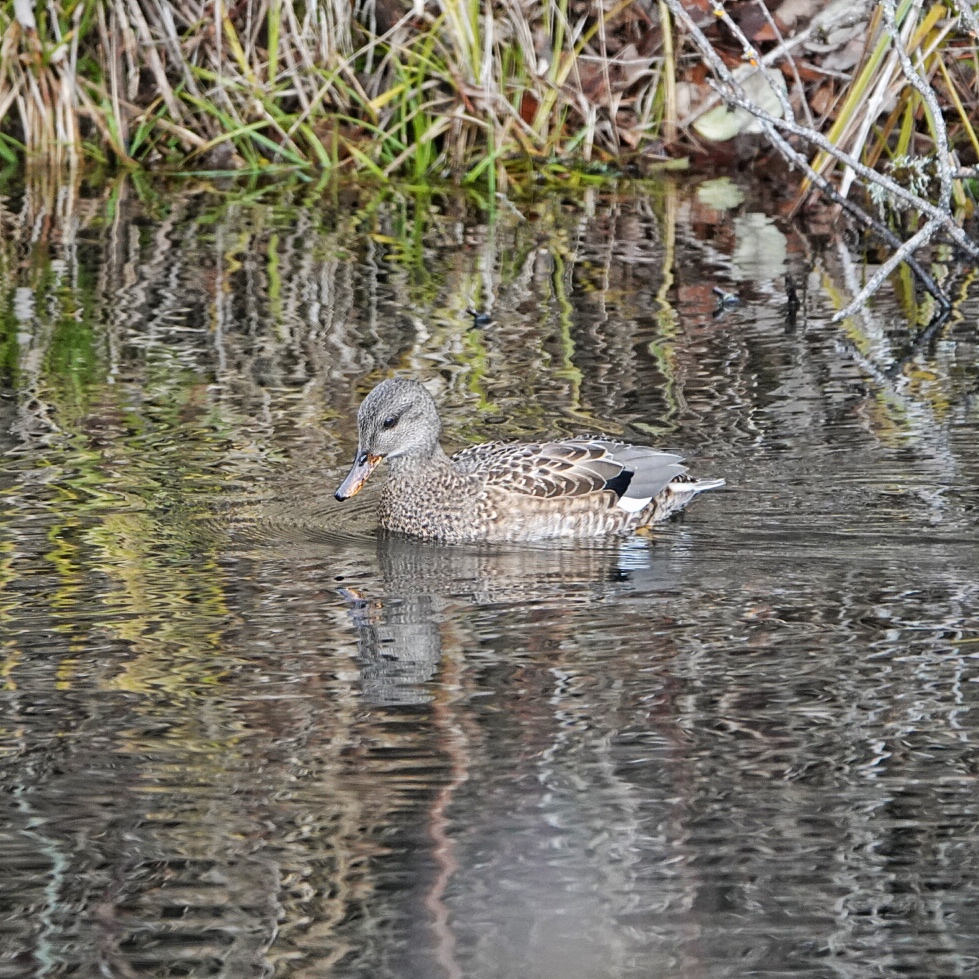
The population of Gadwalls was negatively impacted by the settlement and agricultural usage of their breeding grounds in the northern Great Plains, but they have greatly benefited from conservation efforts aimed at wetlands, and their numbers have increased since the 1980s. They don’t tend to be long distance migrants, with most of them wintering north of the tropics (though some are known to winter in Guatemala), and many of them spend their winters fairly close to their breeding grounds. Most of the Gadwalls found west of the Cascades in winter probably came from no farther away than southern BC, or eastern Washington/Oregon.
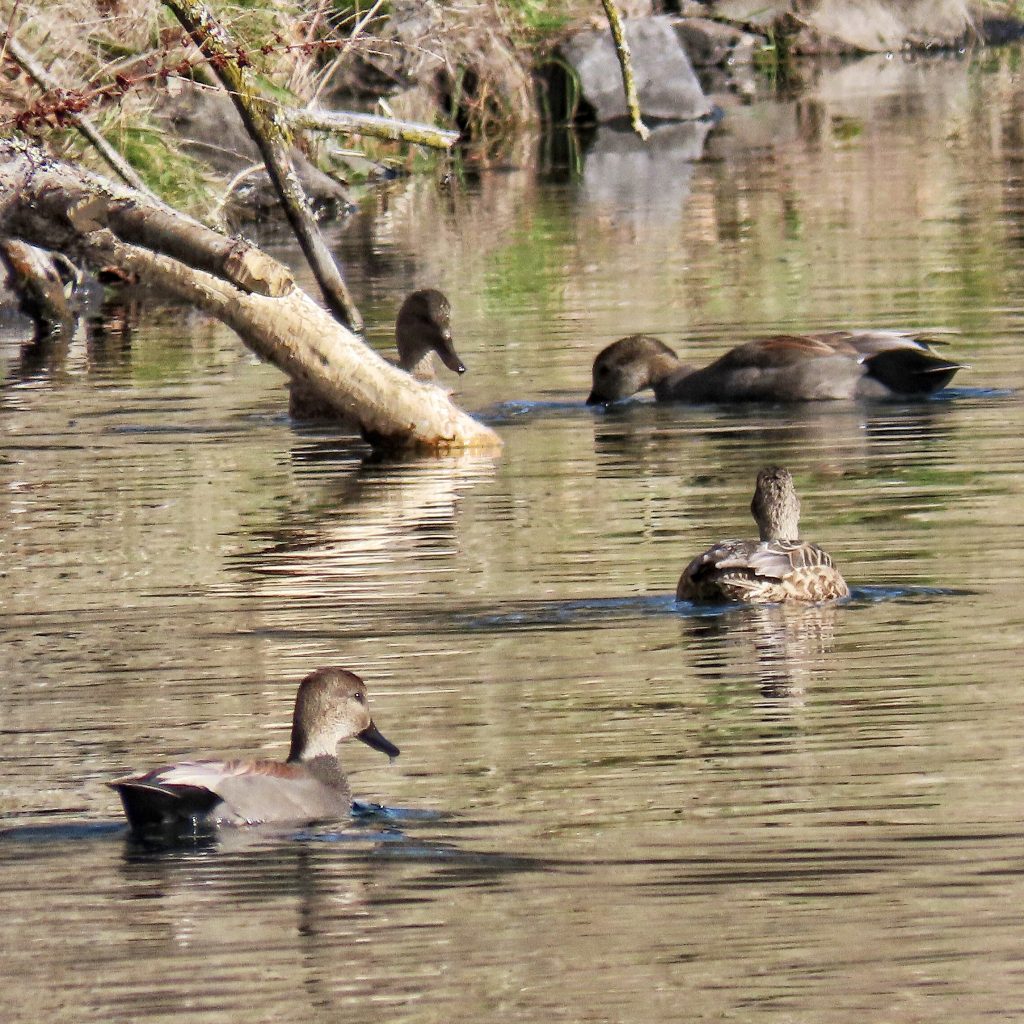
Though they are dabbling ducks, and usually ‘tip up’ to feed, they are also known to dive for food, and are often found in more open water than other dabbling ducks. During nesting season mated pairs do reconnaissance flights over likely areas near water, that have good cover of tall and overhanging vegetation.
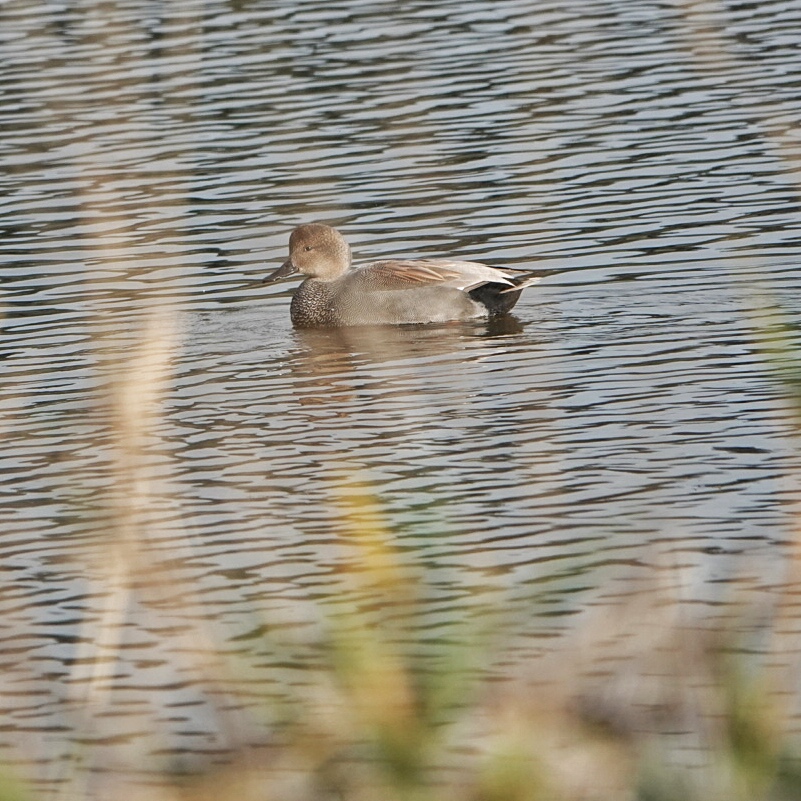
Description– Fairly large (18-22” long, about the size of a Mallard) dabbling duck; male are shades of grey with a brownish grey back, and a black rump and bill; females are mottled brown with a slightly darker eyeline and a grey bill with orange margins; both sexes have a white speculum, which is often visible while they are swimming.
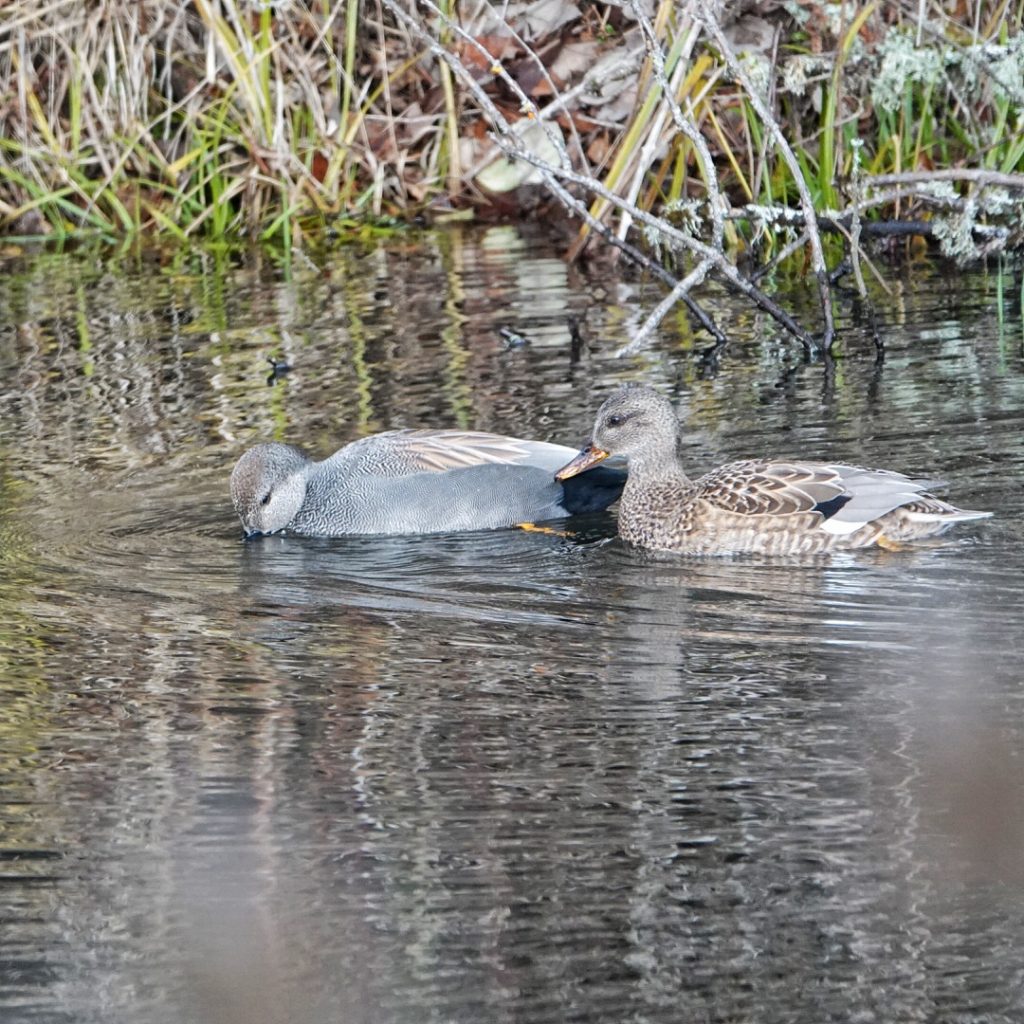
Similar species-The grey body and black rump makes male Gadwalls distinctive; females may be confused with Mallard hens, which have a black and orange bill, and a blue and white speculum; female Northern Shovelers have a larger and wider bill, and green and white speculum.

Habitat-Shallow ponds, marshes, and wetlands with abundant vegetation; breeds only in freshwater locations, but may be found in estuaries during migration and in winter.
Range-Eurasia and North America; can be found year around in almost all parts of our region, but most breeding happens east of the Cascades; found only during migration in the Rockies and high Cascades.
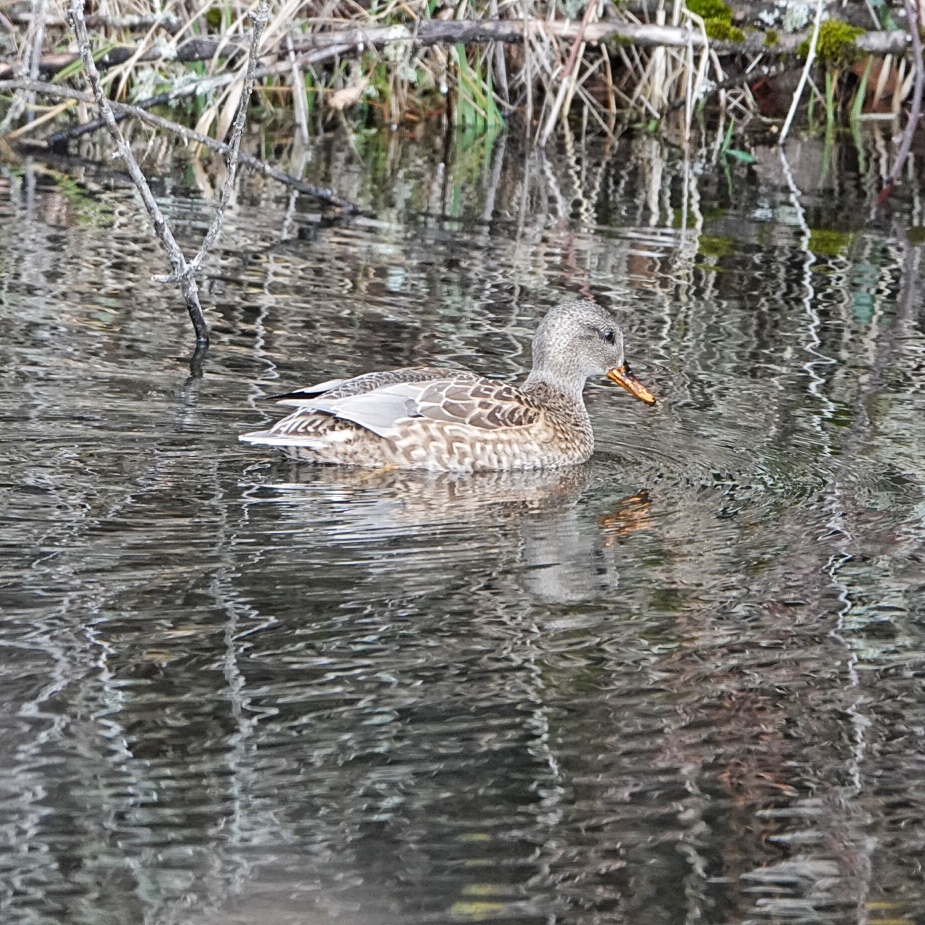
Eats-Aquatic plants (including algae, Azolla sp. duckweed, grasses, reeds, sedges, and milfoil) and invertebrates; laying females and ducklings eat invertebrates (mostly aquatic one) almost exclusively, because of the higher protein; often steals food from coots, and even smaller ducks.
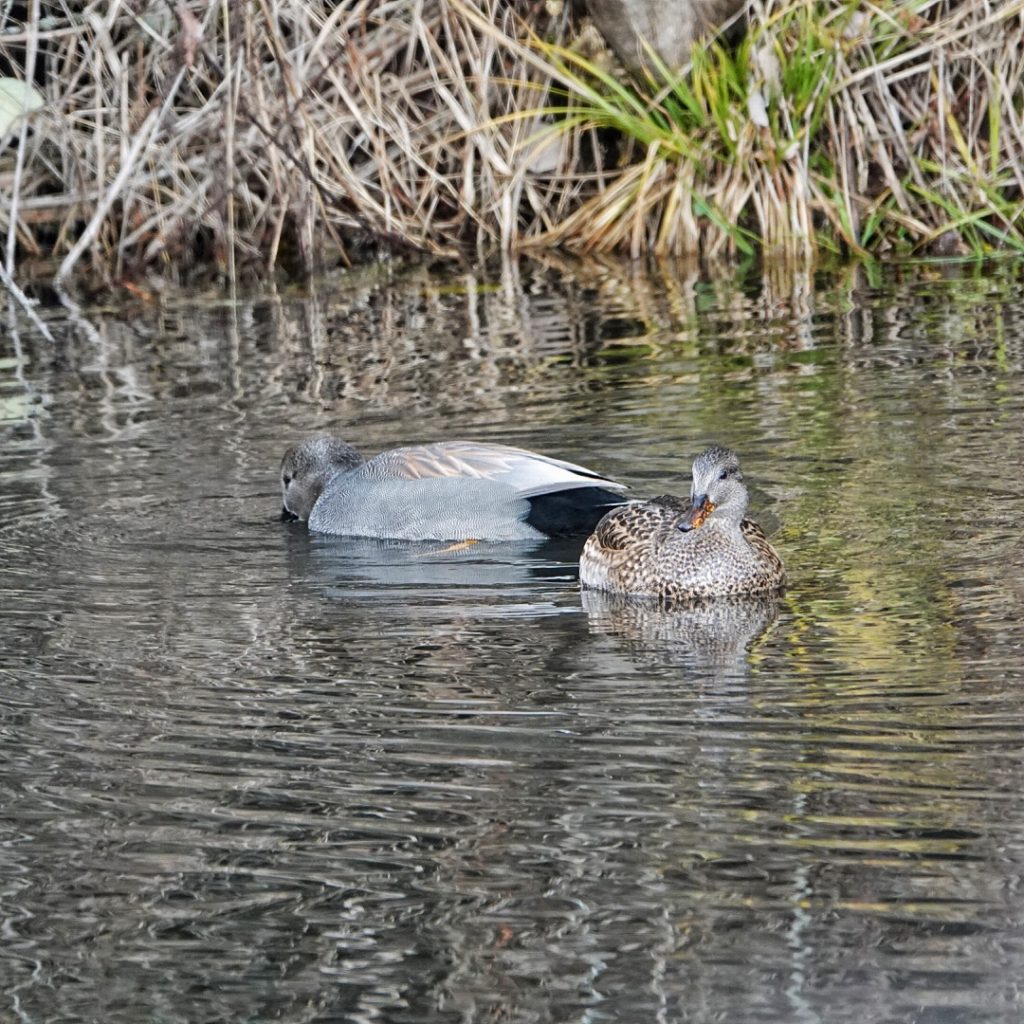
Eaten by-Ducklings are prey for almost all vertebrate carnivores; adults mostly vulnerable to Bald Eagles while on the water, and coyotes, foxes, bobcats, and possibly mink when on or near land; they are also, of course, hunted by humans.
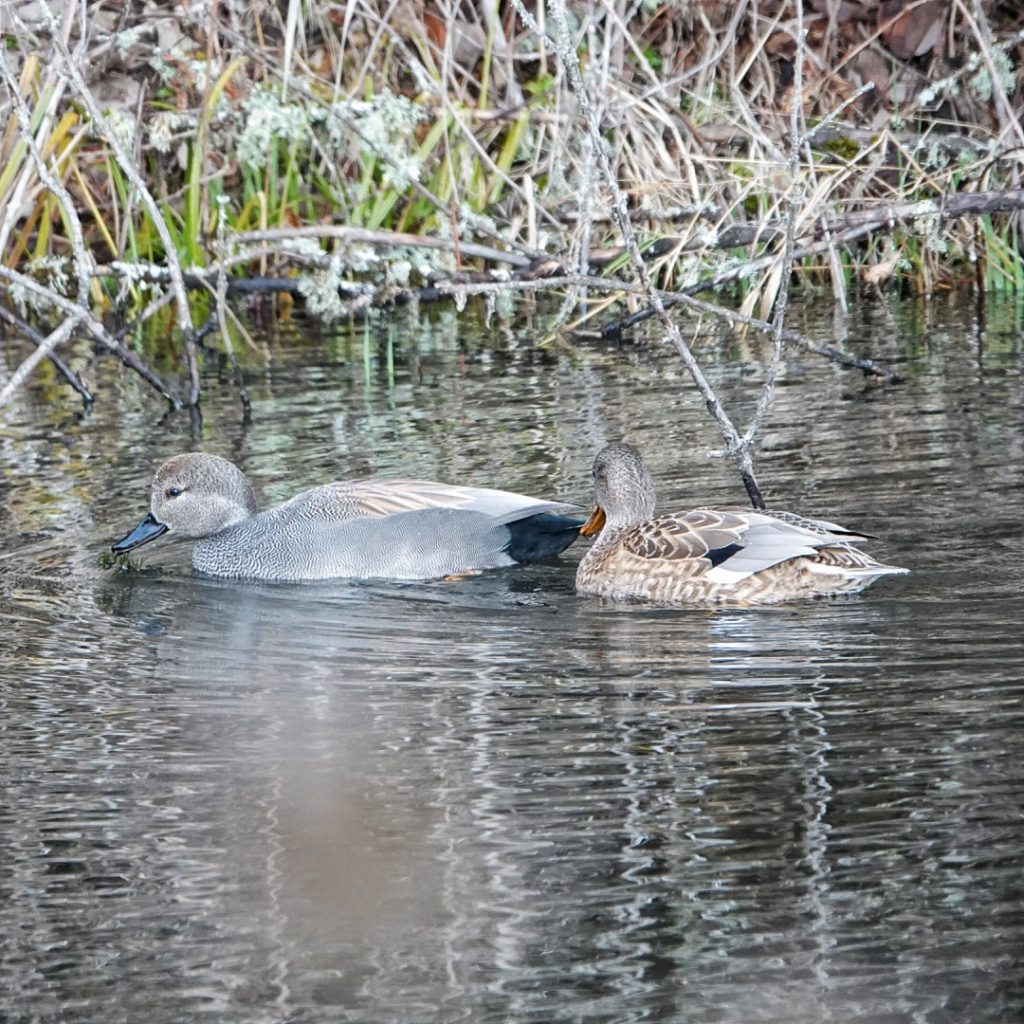
Adults active– Can be found year around in most of our region
Life cycle-Mate selection happens in early fall; builds nests made of grass and down on land, often on islands, and sometimes up to a hundred yards from water; has 7-12 cream to greyish green eggs, which are laid at a rate of 1 per day; incubation take 24-27 days and is done by the female; chicks are precocious, and are led to water by the mother soon after hatching; it takes 7-8 weeks for them to fledge; may live up to 19 years.
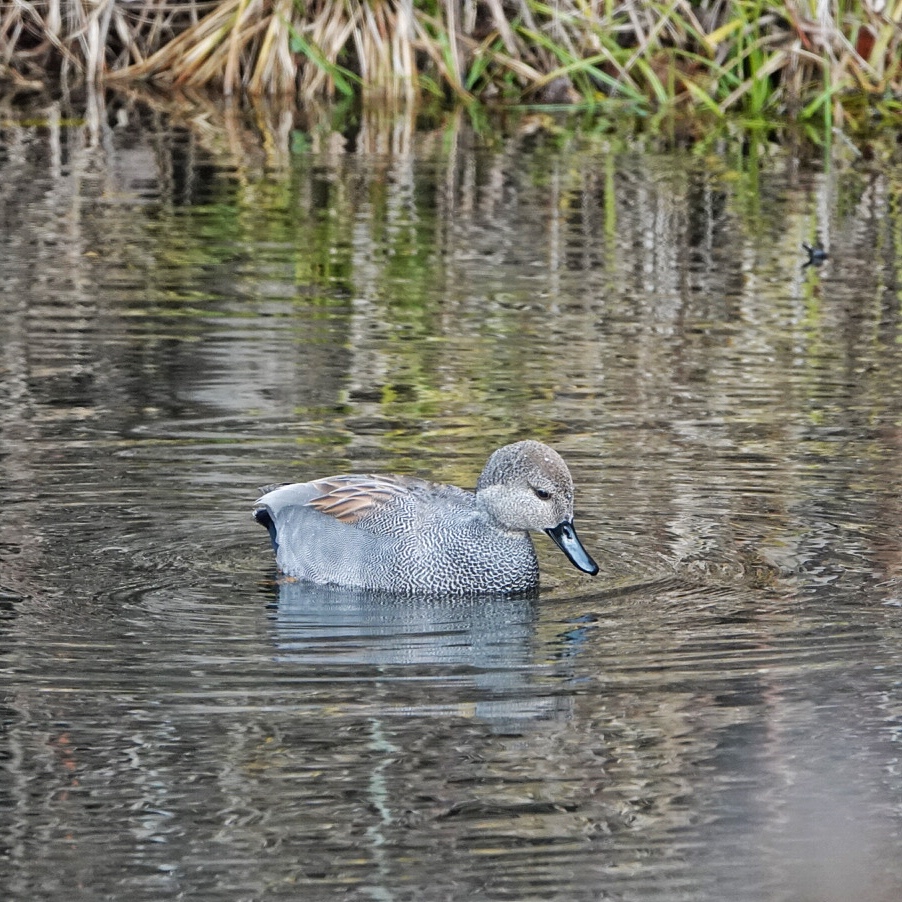
Etymology of names–Mareca is from the Portuguese for ‘small duck’, which isn’t applicable to Gadwalls, but does fit the Eurasian Wigeon, which is the type species of the genus. The specific epithet strepera is Latin for noisy, which doesn’t seem to me to be particularly appropriate for Gadwalls, which haven’t made much noise in my encounters with them.
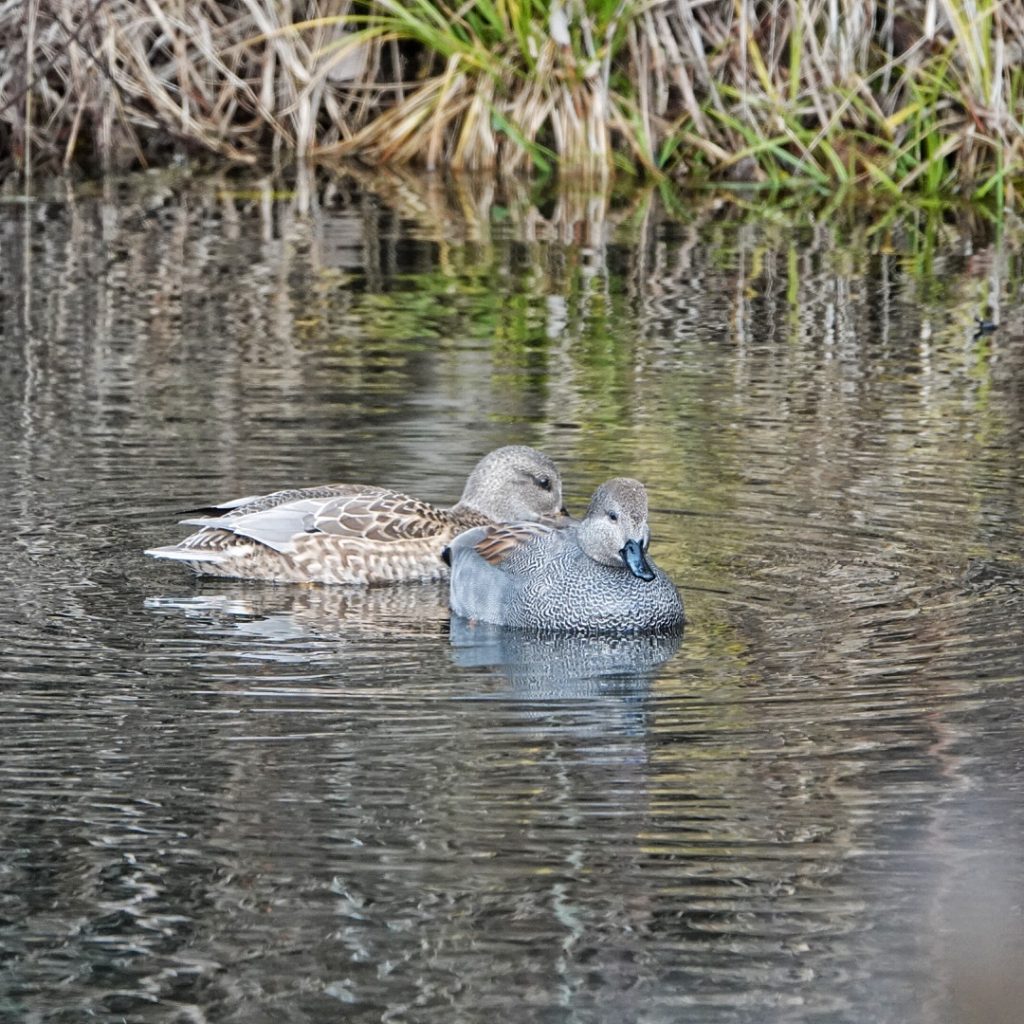
https://www.allaboutbirds.org/guide/Gadwall/overview
https://www.audubon.org/field-guide/bird/gadwall
https://kidadl.com/animal-facts/gadwall-facts
https://www.ducks.org/hunting/waterfowl-id/gadwall
